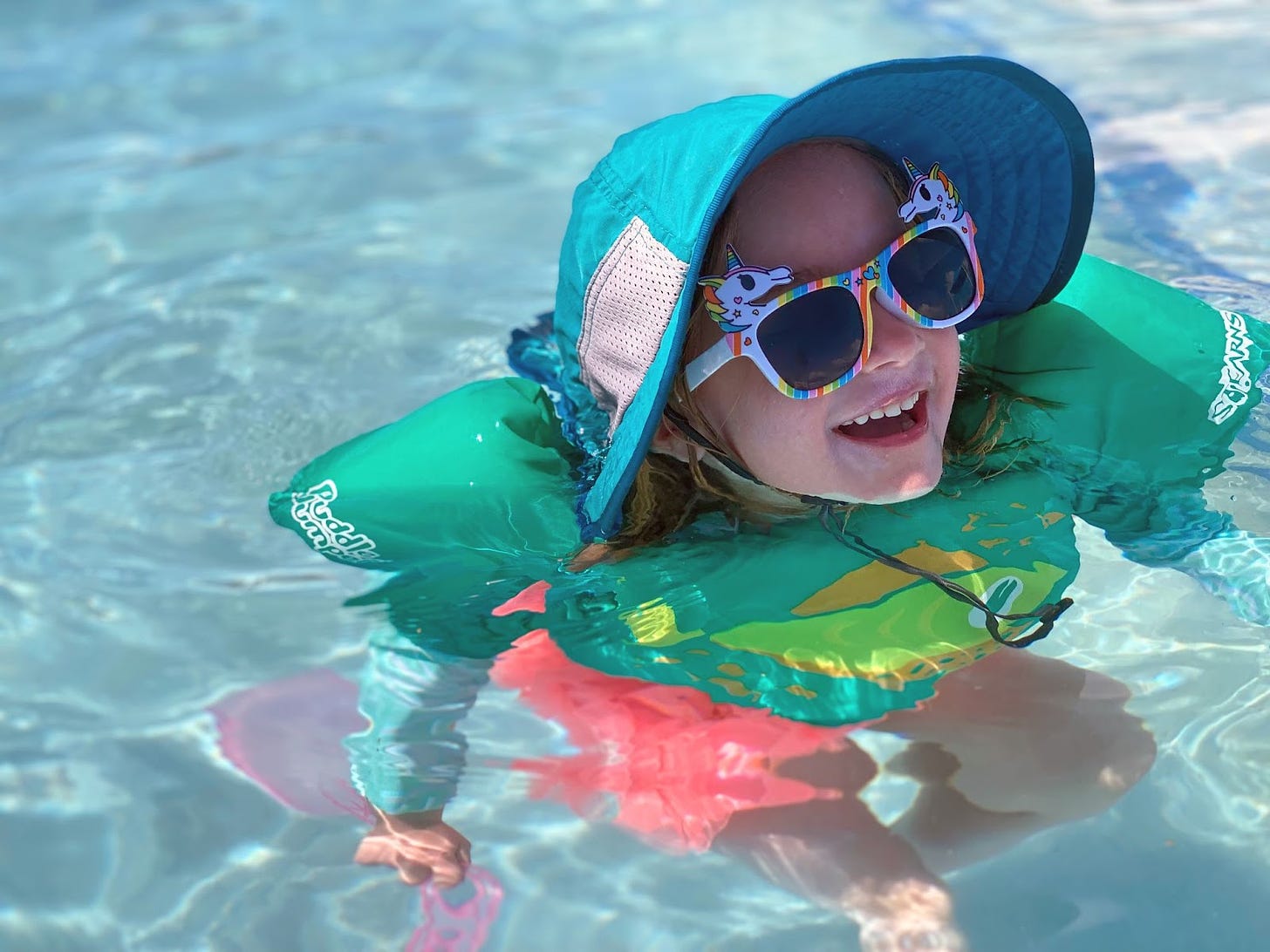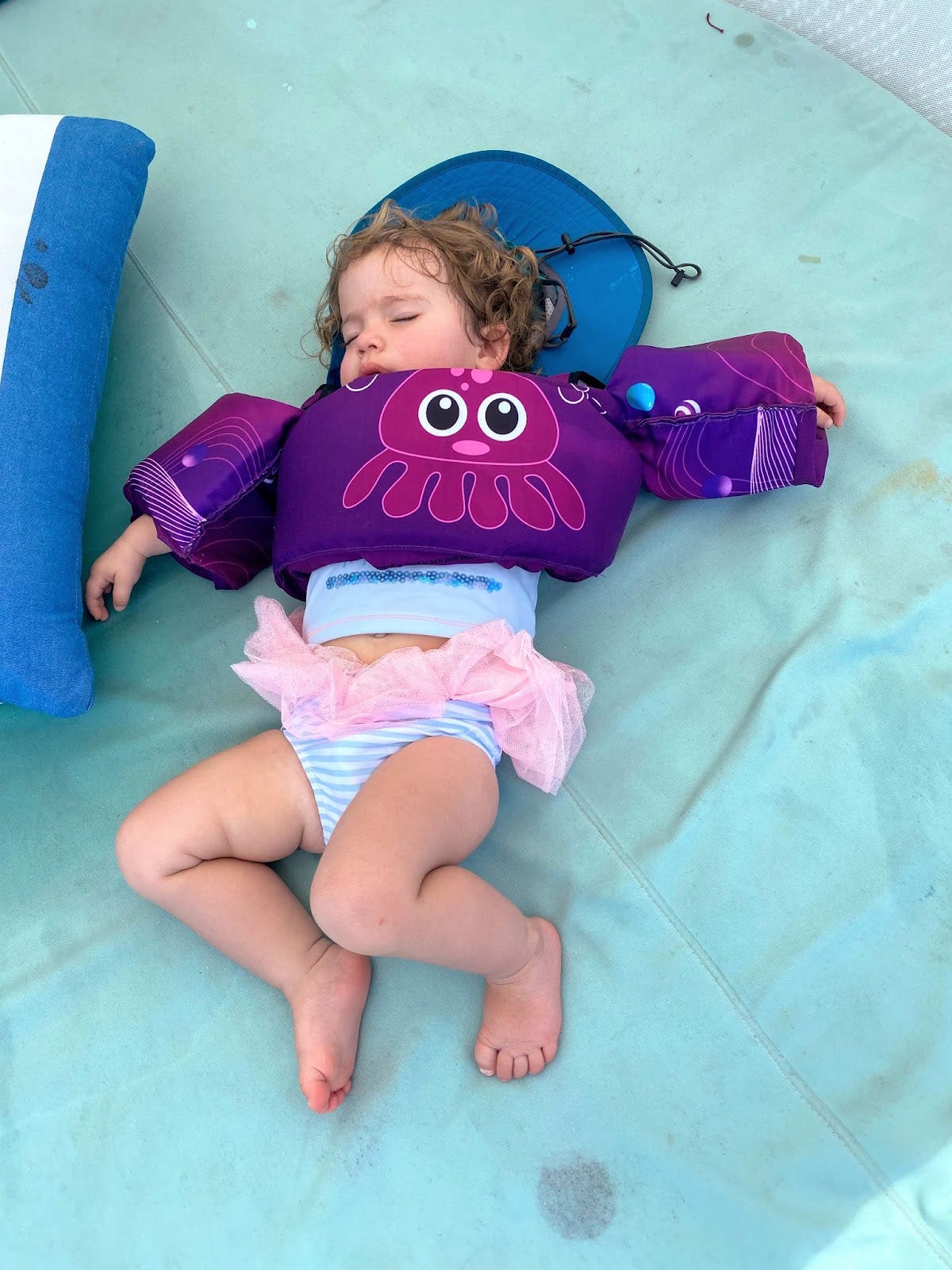Life Jacket
It is criminal for us to watch or talk or hoard resources or otherwise look past the 50+ million students and educators who are on a sinking U.S. public education ship out in a rough sea right now.
Nature-based learning – learning outdoors or bringing elements of nature indoors for learning – is an educational life jacket.
Tl;dr (Too long, didn’t read - aka Cliff notes)
It is criminal for us to watch or talk or hoard resources or otherwise look past the 50+ million students and educators who are on a sinking U.S. public education ship out in a rough sea right now.
They need educational life jackets. Now.
They will still need these educational life jackets in between when we ferry over to the new reimagined education system in our dinghies.
Nature-based learning is an educational life jacket.
And, nature-based learning life jackets will continue to be useful next in the reimagined education system – because nature-based learning practices beget better, more relevant, and more authentic teaching which begets learning contextualized in the larger web of life. And, nature connections are good for humans. And the planet. (*Most of #5 is actually for future posts).
Treat Life Threats First
In first aid, you treat life-threatening emergencies before addressing other injuries – even if they look really bad. If your patient has no pulse, you must stare down an open, bloody head injury and turn to administer CPR. The head needs attention, yes. AND, first you need to restore functions essential to life. Circulation, airway, breathing.
Likewise, if someone’s on a sinking ship, we need to stop them from drowning immediately. Before imagining where they will go next. Instead of “bolting on1” solutions – some that actually accelerate sinking (wrote about that here) – to an already encumbered vessel.

Let’s first turn our attention to resuscitating public education rather than performing brain surgery. Let’s throw our students a proverbial life jacket now in the form of nature-based learning. And build capacity amongst our educators to weave nature-based learning practices2 into their routine instruction so their students get to do nature-based learning. Let’s come up with some other great life jackets, too.
I’m not arguing for nature-based learning as an end. I’m arguing for it as a “MUST DO” no matter what. Now. Between. Next.
Life Jackets
Life jackets save lives. They are simple and they work.
Proper use includes wearing them in rough waters. Also if you don’t know how to swim. And, it makes sense to have them on hand when you head out to sea – even on blue-sky days. Just in case.
Using buoyant materials to stay afloat is not new. Apparently the ancient Greeks and Egyptians employed reeds, animal bladders, and inflated animal skins to stay afloat. Since then, life jackets or personal flotation devices (PFDs) were developed for individual use. While they have evolved in terms of style, materials, and comfort, they still provide the same service: preventing drowning. Reframed with a positive spin: saving lives.
Beyond saving lives, life jackets can be used for fun, learning, and relaxation. Like this:
👆🏻Clara is modeling a swim aid – or what happens when a PFD and water wings have a baby. Here its purpose is fun. Learning to swim. Getting comfortable in the water.
Here 👇🏻 Nora is modeling a more relaxed approach:
Anyhow, life jackets have been useful for a long time. Furthermore, life jackets will continue to be useful to people for as long as we go in water.
Nature-based Learning: Education’s Life Jacket
Nature connections save lives.
In a roll-up review of existing data on nature and health outcomes, researchers found evidence for all of these benefits:
Improvements related to:
🧠cognitive function,
🧠brain activity,
🩸blood pressure,
❤️🩹mental health,
🏃physical activity,
💤sleep,
❤️cardiovascular disease
Nature-based learning practices3 are simple actions real teachers can do right now to foster these healing nature connections for their students and themselves.
Proper use of nature-based learning includes employing it in today's rough educational waters IN SCHOOL, especially since we’re on a sinking ship (more here). And we should keep nature-based learning in hand when we arrive at the reimagined education system proffered by those who do such proffering. Also – we’ll want to have nature-based learning on the dinghies that carry us to the reimagined system.
Nature connection has been around for as long as people have existed on this planet. This forms the basis of Fromm’s (1964) “biophilia” and Wilson’s (1984) “Biophilia Hypothesis.” Based on my limited knowledge of Indigenous cultures, “biophilia” (in practice if not in name) has been part of Indigenous worldviews for way longer. Probably always. Plenty more to learn there.
The biophilia hypothesis itself goes something like this: Humans evolved outdoors in and with more-than-human nature, therefore we have an innate desire to seek connection to nature. We come by this desire honestly, as it has been honed over 7 million-ish years and relates to our survival (i.e., seeking out colors – greens and blues – that represent plant life and water; developing a taste for places of refuge where we can take cover – e.g., caves, forests and “prospect” where we can see far and wide taking in both resources and threats – e.g., the savannah).
Human-nature connections have morphed over time so we’ve had to develop different styles of nature-connection life jackets over time. For example, as we’ve become an indoor species, architects have developed a “biophilic design life jacket” which integrates our sensory evolution in nature with the built environment in which we suddenly find ourselves almost all the time (people in the U.S. spend 90% of our lives indoors4! Eek! 😬).
Nature-based learning is like a life jacket. It has been around for as long as there have been people learning. Its integration into formal schools is a bit harder to track; I would hazard that it coincides with the advent of formal schooling (per records, this was probably about 2600 B.C. in Egypt) – since in that time humans spent a great deal of time outdoors. Nature-based learning has no doubt evolved over time – taking various forms, frequencies, levels of immersion, and more (described here). And, nature-based learning – like the swim aids (aka PFDs) modeled by my kiddos above – can be fun or relaxing too.
Also, side-note: nature-based learning practices beget better, more relevant, and more authentic teaching which begets learning contextualized in the larger web of life. And, nature connections are good for humans. And the planet.
Now. In Between. Next. Yes.
You get the metaphor so I’ll leave it there. And now I’ll be back in the mode of ALL CAPS YELLING a bit (sorry).
Play this babbling brook to keep your nerves calmed as I yell. I do want you to be riled up because this is a BIG DEAL — and my goal isn’t to stress you out. Confusing, I know.
Students are SUFFERING NOW. Educators are SUFFERING NOW. WE MUST DO SOMETHING NOW!
I’m not saying we don’t need a total re-imagination of the public education project in the U.S. (probs other places too – though at least some places seem to have it more figured out than we do). I’m fully on board to support and provide ideas (🙋🏻♀️ Umm…may I suggest nature connection? LOL) for the education revolution. I will roll up my sleeves for this.
I just can't abide talking about changes, frameworks, reforms, futurist thinking, and more changes to our education system without tossing a life jacket to the 50+ MILLION HUMANS WHO ARE IN THE SINKING U.S. PUBLIC EDUCATION SHIP NOW.
It is criminal to sit on mountains of data about our failing schools. Worse still to hold it in the same hand with growing mountains of actionable evidence about the benefits of nature for humans. To tarry on reading headlines of a mental health state of emergency and climbing suicide rates. To watch as the public education system hemorrhages teachers and students. To hoard resources only for solutions outside of schools when so many students – especially the most marginalized – are still in schools. To name and put our fingers on countless failures in our education system and shrug our shoulders. To shirk our responsibility. To spend even a moment reimagining education without first throwing a life jacket to those who are near drowning now.
Nature-based learning. Now. Between. Next. Yes.
❤️,
Me
I borrowed “bolting on” phrase from Ulcca Joshi Hansen’s book The Future of Smart.
Nature-based learning practices are instructional (pedagogical) and classroom design actions to implement nature-based learning.
They can be employed by any educator, anywhere, at any grade level, in any content area, in any curriculum or school design model.
They can be applied in formal (i.e., in schools, during the school day) and informal (i.e., in everyday life) educational settings.
They are within an individual educator’s locus of control to implement.
Nature-based learning practices are instructional (pedagogical) and classroom design actions to implement nature-based learning.
They can be employed by any educator, anywhere, at any grade level, in any content area, in any curriculum or school design model.
They can be applied in formal (i.e., in schools, during the school day) and informal (i.e., in everyday life) educational settings.
They are within an individual educator’s locus of control to implement.
U.S. Environmental Protection Agency. 1987. The total exposure assessment methodology (TEAM) study: Summary and analysis. EPA/600/6-87/002a. Washington, DC.



